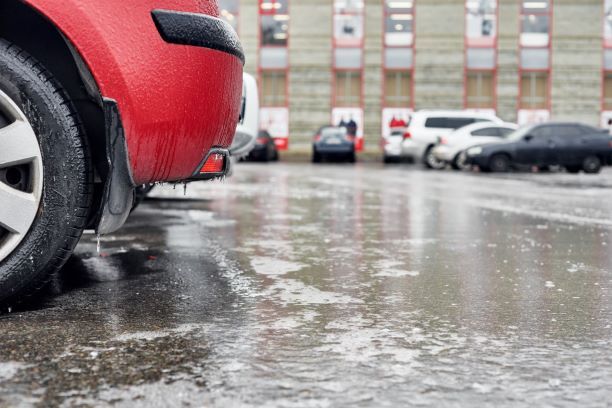
Driving during severe winter weather can be challenging regardless of one’s experience behind the wheel. With dropping temperatures and hazardous snow, sleet, and rain in many a forecast, you’re going to want to play it safe when on the roads this winter. And while there’s no foolproof technique to winter driving, knowing how to drive on ice can make your trip a bit easier and safer.
Tip #1: If You Don’t Have To Go Out, Don’t
If there’s one key piece of advice we can give you when it comes to driving on ice, it’s this: don’t do it. If you can help it, stay at home until the weather passes and road crews have had a chance to clean up the streets and highways. Monitor your local weather reports and plan ahead when it comes to running errands and stocking up on food and supplies. You don’t want to be caught behind the wheel or in the stuck in the checkout lane when winter rears its ugly head.
As much as we might endorse the idea of staying home and cozying up with a blanket and some hot cocoa while the winter storm passes, we know you may not always have that luxury. Life goes on regardless of the weather. So if you MUST go out under less than ideal winter driving conditions, here’s what you’ll need to know…
Tip #2: Slow Down!
Give yourself plenty of time to get where you’re going. Even short commutes can be seriously disrupted by even the slightest bit of snow or ice. And when you’re on the road, drive cautiously and well under the posted speed limit. This will increase your ability to steer and brake effectively without sliding and/or losing control of your vehicle.
Tip #3: Go Easy On the Gas…and the Brake
With ice or snow on the ground, you won’t be able to punch the gas pedal and expect to accelerate nearly as quickly as you’re used to. Apply just a bit of pressure at a time to the pedal until you reach a comfortable speed. Failure to do so could result in spinning tires, sliding, or a complete loss of vehicle control.
Likewise, take the time to familiarize yourself with how your vehicle brakes in extreme conditions. Deceleration can be extremely tricky and dangerous on icy roads.
You’ll also want to increase your following distance (approximately six seconds behind the vehicle in front of you) so that you can brake safely should you need to. Instinctively slamming on your brakes in icy conditions will do you no good and can potentially put you in even more danger.
Tip #4: Don’t Stop Unless Absolutely Necessary
Whenever possible, use your vehicle’s inertia to your advantage. In other words, don’t come to a complete stop unless you absolutely have to. In making frequent stops, you might find it harder than usual to get going again (especially on an incline). Whereas if you maintain a constant, and safe velocity, you decrease the chance of getting stuck. You might find it helpful to keep pace with traffic signals by slowing down well ahead of a red light and accelerating again once it turns green. This way, you don’t run the risk of coming to a complete stop and frantically spinning your wheels trying to get going again.
Tip #5: Take Hills With Caution
As you can probably imagine, icy hills can be problematic for motorists. This is another instance in which you’ll want to use your vehicle’s inertia to assist you. If possible, safely gain some speed at the bottom of a hill, apply steady pressure to the gas throughout, and use that momentum to carry you to the top of the hill. Don’t attempt to increase your power as you ascend, as this will likely not work and you may lose control. Likewise, do not stop on a hill because you put yourself at risk of sliding backwards. And trying to climb a hill from a dead stop during icy conditions is virtually impossible.

